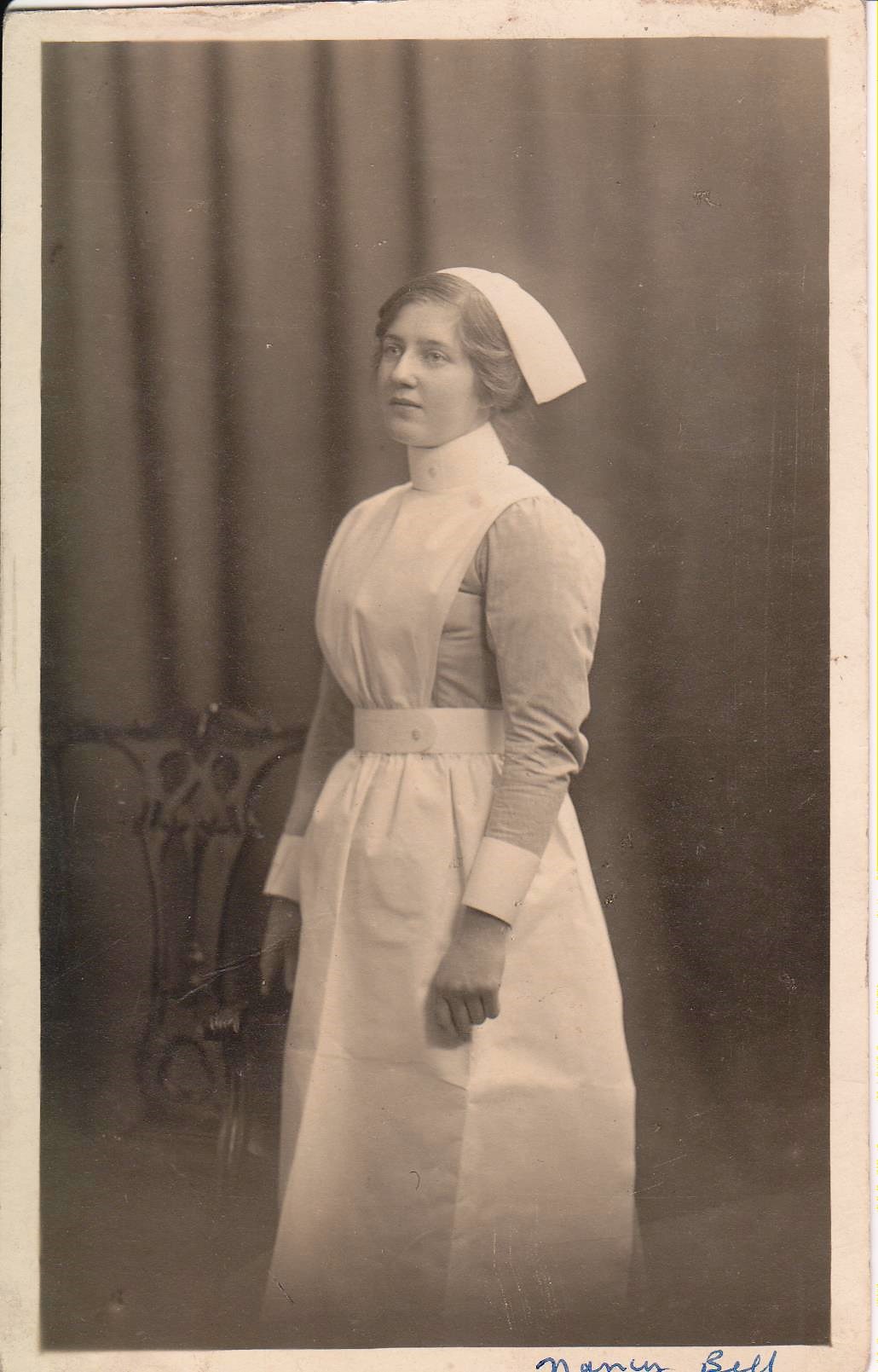
Story submitted by Mrs Drury, a resident of Richmond.
Nancy Bainbridge was born in Weardale, County Durham in May 1894. She was one of eight children whose parents were hardy hill farmers. Nancy was a very practical person and joined Queen Alexandra’s Imperial Military Nursing Service in 1914.
Nancy served at a military hospital in East Anglia where the nurses received casualties straight from the Somme. Her upbringing on a farm had afforded her some preparation for the ensuing, distressing sights and sounds. She described how the men arrived with mud and tufts of grass in their wounds. The nurses found out the hard way that soldiers’ skin, subjected to the mustard gas attacks in the trenches, could not be washed with water as that inflicted pain. Nancy received many deathbed requests.
After the war Nancy worked as a private nurse in families with disabled soldiers and patients with other conditions. She married Captain Jack (John Adam) Bell.
Nancy had a brother William, also a hill farmer and ten years older. He joined the Northumberland Fusiliers, but saw little service because, when detailed to chop an officer some sticks, a splinter blinded him in one eye.
Another sibling, Violet, worked in Barnard Castle’s recruiting office. Her soldier husband Harry Raine was awarded the Military Cross. The medal was presented to the Bowes Museum, Barnard Castle.

Explore more memories from the ribbon
-
William Rutley
William was the son of William and Mary Rutley of 8 Mabal Street, Middlesbrough. He enlisted in late 1914 and was posted to the 8th Battalion of the Yorkshire Regiment. The 8th Battalion left for France in late August 1915 and occupied trenches in the La Rolanderie and Bois-Greniers districts throughout October, November and December. William is reported to have died of wounds on December 16th. He was 22 years of age. He was awarded the 1915 Star, the British War Medal and the Victory Medal. He was buried at Sailly-sur-la Lys Canadian Cemetery, Pas-de-Calais.
-
Rees Brothers
George Frederick Gywn Rees and his younger brother Charles Bernard Russell Rees from Leicestershire both joined the Yorkshire Regiment during the First World War. Their parents, Sydney and Margaret Rees were relatively wealthy and they lived in Sheffield for much of their childhood. Sydney was a Church of England clergyman. Born only 1 year apart, George in 1895 and Charles in 1896, it would appear that they took similar paths through their early life. In the 1911 census they were both recorded as living at a boarding school in Workshop along with several hundred other boys. George and Charles both joined the 5th Battalion of the Yorkshire Regiment in 1915. Unfortunately their service records do not appear to have survived but museum records track their military careers from 1915 to 1918. George was wounded twice, in November 1916 and in June 1917, but neither wound appears to have affected his career as he was promoted to acting Captain in July 1917. Charlie however appears to have made it through the war relatively unscathed. Other than various promotions he is not listed until June 1918 as missing, turning up as a Prisoner of War in September. He returned home in late 1918 to Scrayingham Rectory, Stamford Bridge, York. Charles’ medal card records that he received the Victory Medal and the British War Medal. Both brothers survived the war but we do not know what happened to them later in life.
-
2nd Lt G H Smith
In October 1915 Geoffrey Howard Smith was commissioned as a 2nd Lieutenant in the 5th Battalion from being a member of the ranks of the Inns of Court Officer Training Corps (O.T.C.). At that time he was probably based at the O.T.C. training camp at Berkhamsted Common Hertfordshire. In August 1916 he is listed as wounded in France. He recovers from his wounds but in June 1918 he is listed as missing then confirmed as a prisoner of war in September 1918. Smith remained in captivity until his release and return to England in January 1919. This event is recognised by a letter sent to him from King George V.
